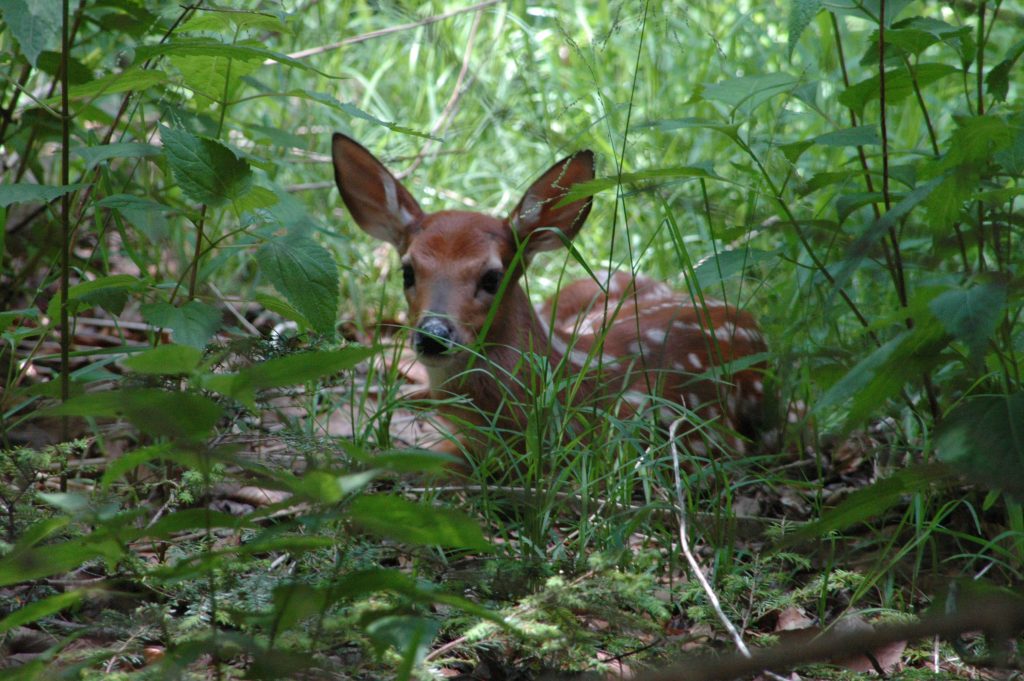While checking some game camera videos, I came across what appeared to be a doe with 3 fawns. Triplets aren’t the norm and with a 20 sec video I was skeptical.
Then just a week later what appeared to be another video of them.
What are the odds? We often hear about sightings of triplets. But how rare are they?
From 1999 – 2006 the PGC checked 6,253 road-killed female deer for embryos. Of all those deer, only 125 (2%) were carrying triplets. So 1 in 50 females may give birth to triplets. I’m not a gambling man but these odds are better than winning the lottery.
Of those 125 triplets, 91 (1.5%) were from adult females (at least 2 years old), 30 (0.4%) were from yearlings, and 4 (<0.1%) were fawns. I was really surprised that last figure was greater than zero!
Triplets occur in every WMU, but the top areas are WMUs 1A and 2B (Pittsburgh area and along the Ohio border), and WMU 5B (Lancaster and York counties area).
Keep in mind that not all triplet embryos become triplet fawns. Some embryos are aborted or resorbed by the female if she cannot obtain sufficient nutrition over winter.
Let’s just assume those are triplets in that video. What are the odds that if they were born June 1st (half of all fawns are born in PA by that date) that all 3 would still be alive by the end of July (~9 weeks later)?
We’ve already discussed this for twins. For them, only about 1 in 4 (or maybe 1 in 3) adult doe still have both babies in tow. Fire up the calculator and we’ll figure it out for those twins plus one.
The percentage of fawns that survive to 9 weeks of age in Pennsylvania is 65% – 75%.
That means the probability that all 3 fawns survive to 9 weeks of age is 0.27 (= 0.65 × 0.65 × 0.65) to 0.42 ( = 0.75 × 0.75 × 0.75).
Consequently, the odds of a doe having triplets this time of year is about 1 in 120 to 1 in 185.
But also keep in mind that just because a doe and fawn are traveling together doesn’t mean they are mother and offspring. We know that by January there is only a 50% chance that a doe and fawn traveling together are a mother-offspring pair.
-Duane Diefenbach
P.S. The odds of seeing a doe with quadruplets? Less than 1 in 3,000 at birth and between 1 in 10,000 to 1 in 20,000 by August!
